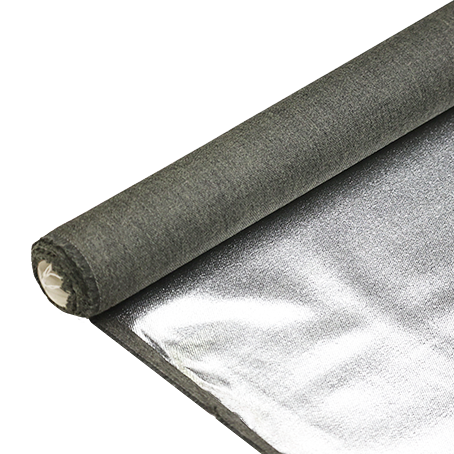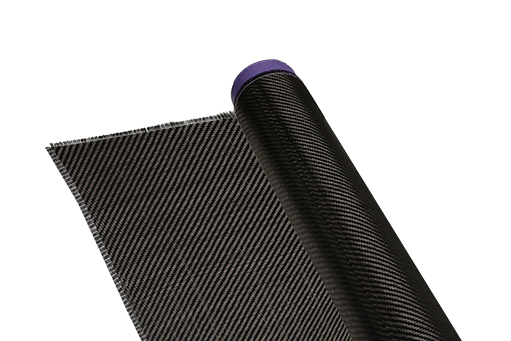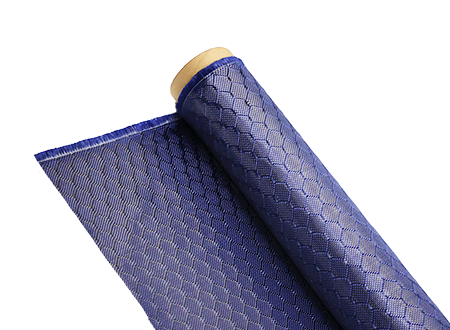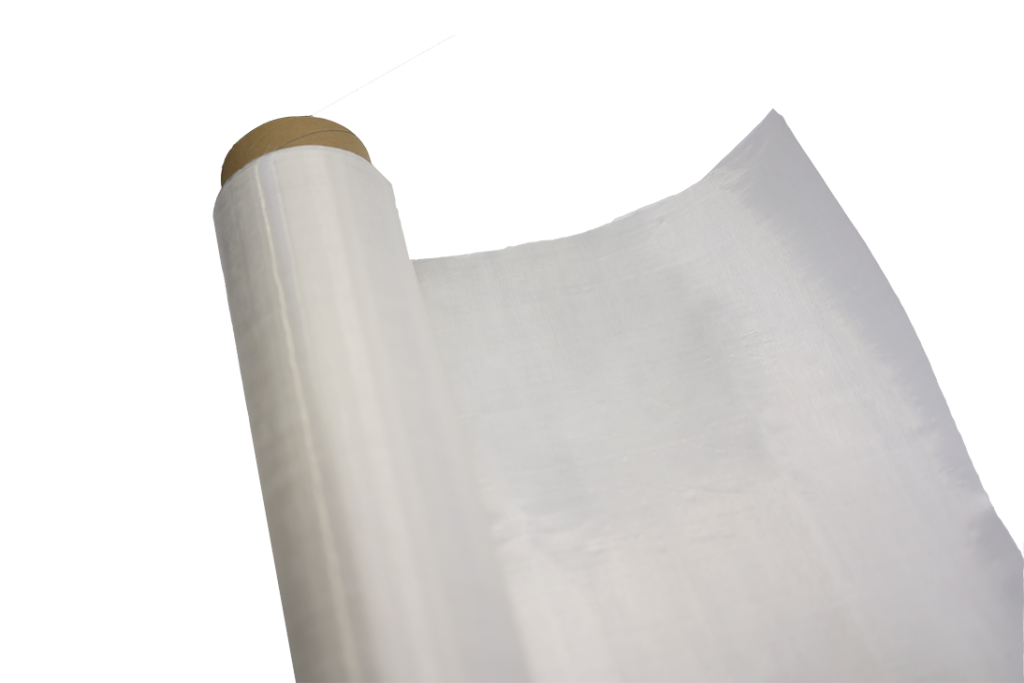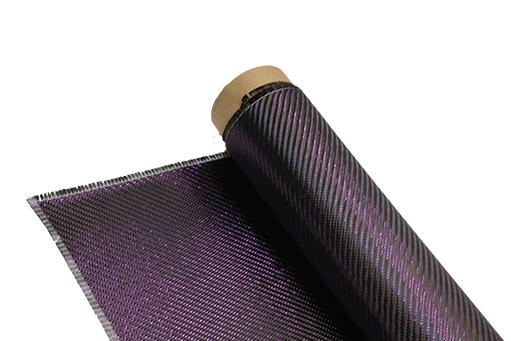How to Carbon Fiber Your Bike: A Complete Guide
-
 Your Composites Expert Carbon Fiber Materials&Products
Your Composites Expert Carbon Fiber Materials&Products -
-1.png?width=686&height=617) Your Composites Expert Aramid Fiber Materials&Products
Your Composites Expert Aramid Fiber Materials&Products -
 Your Composites Expert UHMWPE Materials&Products
Your Composites Expert UHMWPE Materials&Products -
 Your Composites Expert Fiberglass Materials&Products
Your Composites Expert Fiberglass Materials&Products -
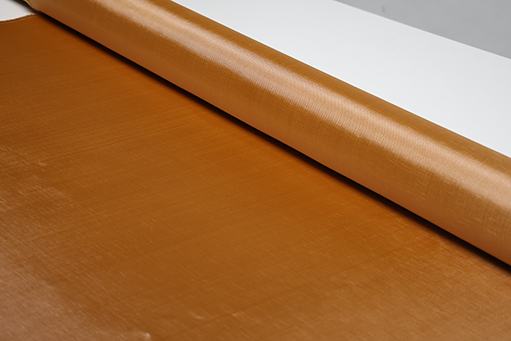 Your Composites ExpertPBO Materials&Products
Your Composites ExpertPBO Materials&Products -
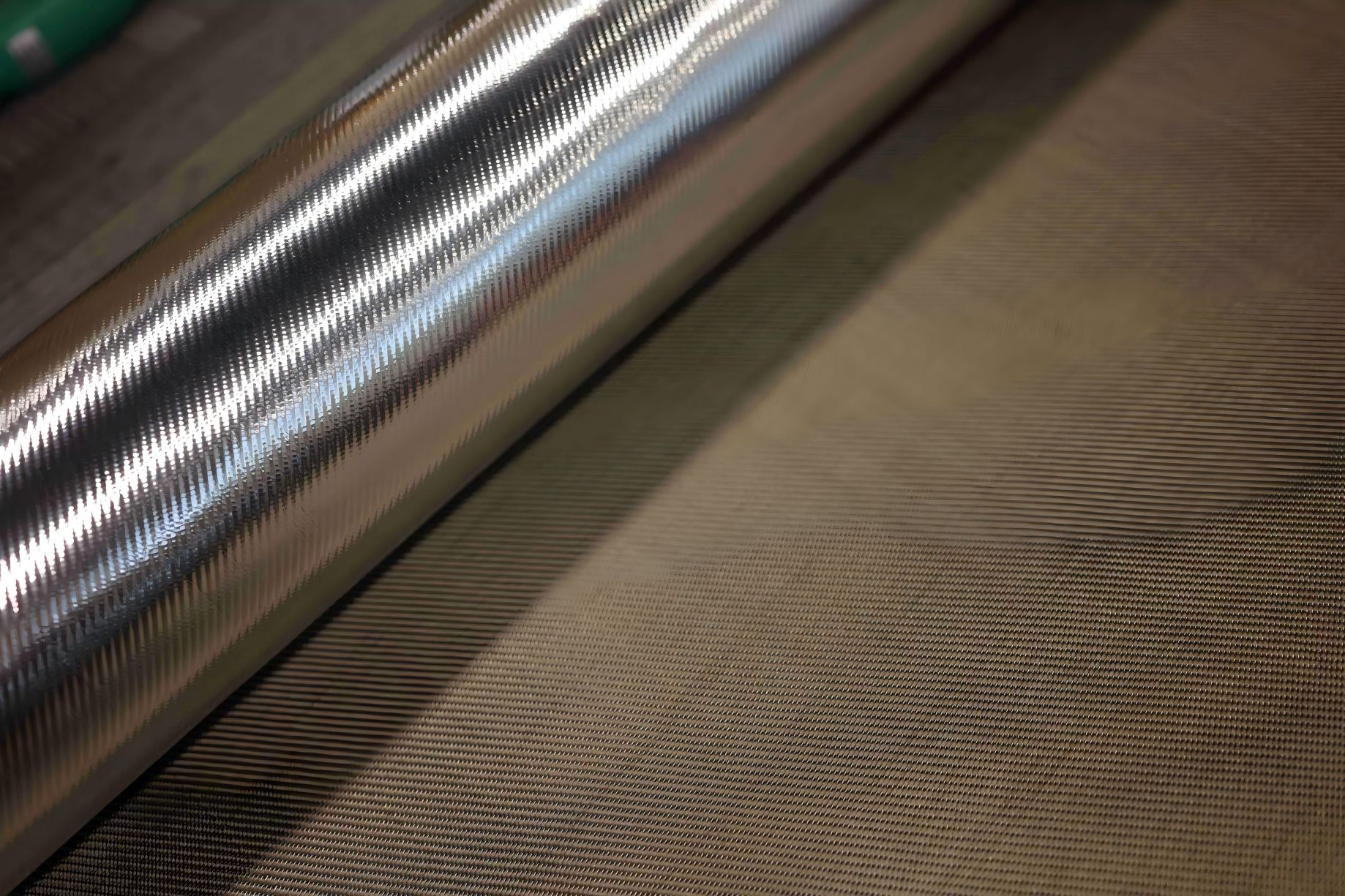 Your Composites Expert Basalt Materials&Products
Your Composites Expert Basalt Materials&Products
If you're looking to upgrade your ride and enhance your cycling experience, learning how to carbon fiber your bike is essential. Carbon fiber bikes are made from thin, strong filaments of carbon that are used in various industries, including race cars and aerospace. The material is lightweight and expensive due to its strength. Titanium is lighter than carbon fiber, making it ideal for beginner road bikes. Carbon fiber bikes are usually around 6.8 kg in weight, making them legal for competition. It is possible to make a DIY carbon fiber bike by replacing parts of an existing bike with carbon fiber components.
- Carbon fiber bikes are lightweight and strong, making them ideal for upgrading your ride and enhancing your cycling experience in Russia.
- Carbon fiber bike frames come in different types for different riding styles, such as road bikes, fixie bikes, gravel bikes, cyclocross bikes, triathlon bikes, mountain bikes, and fat bikes.
- Frame protection and regular maintenance are important for preserving the integrity and performance of your carbon fiber bike.
- Carbon wheels offer advantages over alloy wheels, including improved aerodynamics, vibration absorption, and comfort.
- When choosing carbon rims, consider factors such as aerodynamic performance, crosswinds, and rider weight.
For more detailed information and step-by-step instructions on how to carbon fiber your bike, please contact us at info@ictfibers.com or reach us on WhatsApp at +86 17858113103.
Why Choose Carbon Fiber for Your Bike?
Carbon fiber bikes are constructed using thin, strong filaments of carbon, making them a popular choice across industries like race cars and aerospace due to their exceptional strength-to-weight ratio. This composite material is known for its lightweight nature, allowing cyclists to enjoy a more agile and responsive ride. With carbon fiber, you can upgrade your ride to a whole new level of performance.
One of the key advantages of carbon fiber is its strength. Despite being lighter than many other materials, carbon fiber is incredibly durable and can withstand the rigors of various riding conditions. Whether you're tackling rough terrains or speeding down the road, a carbon fiber bike can provide the stability and reliability you need.
However, it's worth noting that carbon fiber bikes can come with a higher price tag compared to other bike materials. This is due to the expensive manufacturing process and the quality of the material used. While the initial investment may be higher, the long-term benefits of owning a carbon fiber bike make it a worthwhile choice for serious cyclists looking to enhance their performance.
In conclusion, carbon fiber bikes offer a range of benefits, from their lightweight construction to their exceptional strength. If you're looking to upgrade your ride and experience the thrill of cycling in Russia, investing in a carbon fiber bike can be a game-changer. Keep in mind the importance of regular maintenance and frame protection to maximize the lifespan and performance of your carbon fiber bike.
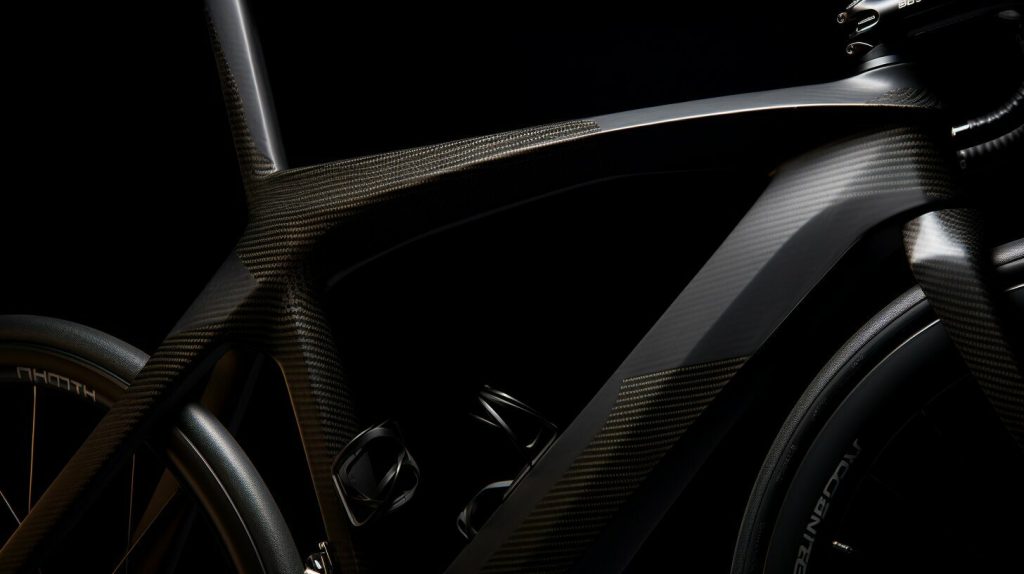
| Advantages of Carbon Fiber Bikes |
|---|
| Lightweight |
| Exceptional strength-to-weight ratio |
| Durable and reliable |
Understanding Carbon Fiber Bike Frames
Carbon fiber bike frames come in a variety of types to suit different riding styles, ensuring you can find the perfect frame for your cycling preferences. Whether you're a road cyclist, a gravel adventurer, or a mountain biking enthusiast, there's a carbon fiber frame designed to optimize your riding experience. These frames are constructed using thin, strong filaments of carbon, resulting in a lightweight yet durable material that offers excellent performance on various terrains.
For road cyclists, there are options such as rim brake road bike frames and disc brake road bike frames. Rim brake frames are designed to accommodate traditional rim brakes, while disc brake frames provide enhanced stopping power and are compatible with disc brake systems.
| Type | Riding Styles |
|---|---|
| Rim Brake Road Bike Frames | Traditional road cycling |
| Disc Brake Road Bike Frames | Enhanced stopping power, all-weather performance |
| Carbon Fixie Bike Frames | Fixed gear/single-speed cycling |
| Carbon Gravel Bike Frames | Off-road adventures, mixed surfaces |
| Carbon Cyclocross Bike Frames | Cyclocross racing, off-road agility |
| Carbon Triathlon Bike Frames | Triathlon racing, aerodynamics |
| Time Trial Bike Frames | Time trial racing, aerodynamics |
| Carbon Mountain Bike Frames (Hardtail & Full Suspension) | Off-road trails, rugged terrain |
| Carbon Fat Bike Frames | Snow, sand, and loose surfaces |
| Carbon Fork Road Bike Frames | Compatibility with non-carbon frames |
| Carbon Fork Mountain Bike Frames | Compatibility with non-carbon frames |
When selecting a carbon fiber bike frame, it's essential to consider your preferred riding style, as each type provides specific advantages for different cycling disciplines. Whether you're seeking speed, agility, or versatility, the right carbon fiber bike frame can enhance your performance and enjoyment on the road or trails.
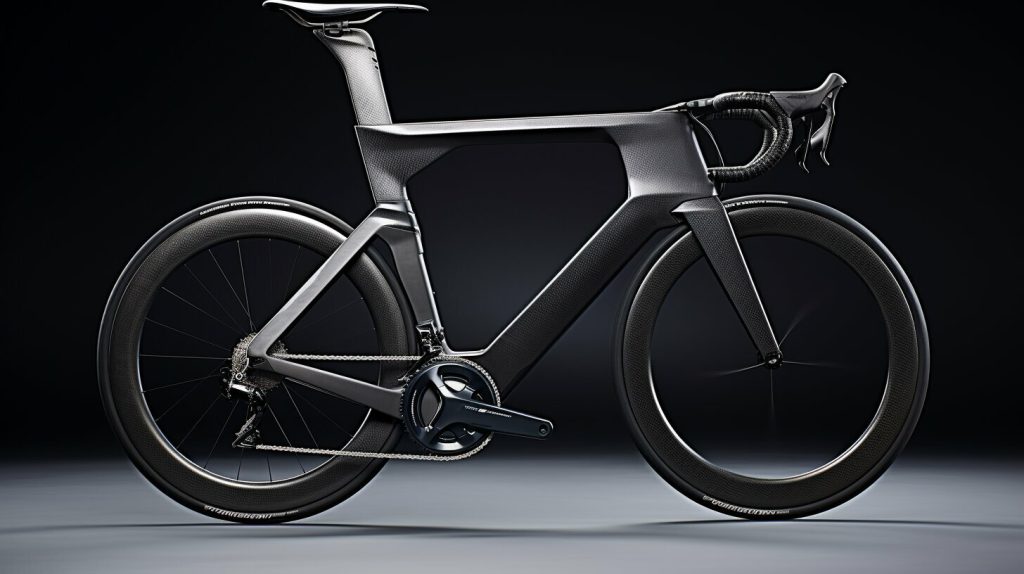
Contact us at info@ictfibers.com or via WhatsApp at +86 17858113103 for any inquiries regarding carbon fiber bike frames or for assistance in finding the perfect frame for your needs.
Frame Protection and Maintenance Tips
To preserve the integrity and performance of your carbon fiber bike, proper frame protection and regular maintenance are essential. Carbon fiber bikes are known for their lightweight and strength, but they require special care to ensure they last for many years. Follow these tips to keep your carbon fiber bike in top shape:
- After each ride, make sure to clean your bike thoroughly. Use a mild detergent and warm water to remove any dirt, grease, or debris that may have accumulated. Avoid using harsh chemicals or abrasive cleaners, as they can damage the carbon fiber material.
- Invest in frame protection accessories such as frame guards or protective films. These can help prevent scratches, chips, and other damage to your bike's frame. Additionally, consider using silicone spray or wax to further protect the carbon fiber surface from wear and tear.
- Regularly inspect your bike for any signs of damage or wear. Check for cracks, dents, or loose components, and address any issues immediately. If you're unsure about the condition of your bike, it's always a good idea to consult a professional bike mechanic.
- When storing your carbon fiber bike, make sure to keep it in a dry and temperature-controlled environment. Avoid exposing it to extreme heat or cold, as this can cause the material to expand or contract, leading to potential damage.
- Ensure that you have the necessary safety equipment for your rides. Invest in a quality bike lock to deter theft and consider using a bike cover to protect your bike from the elements when parked outside. Additionally, always wear a helmet and other protective gear when cycling.
By following these frame protection and maintenance tips, you can extend the lifespan of your carbon fiber bike and continue enjoying its lightweight and high-performance capabilities. Remember, taking care of your bike is an investment in your cycling experience.
Table 1: Essential Maintenance Checklist
| Task | Frequency |
|---|---|
| Cleaning the bike | After each ride |
| Inspecting for damage | Weekly |
| Applying frame protection | As needed |
| Storing in a dry environment | Always |
| Using safety equipment | Always |
Remember, proper maintenance is key to optimizing the performance and longevity of your carbon fiber bike. If you have any specific questions or concerns about frame protection or maintenance, feel free to reach out to our experts at info@ictfibers.com or contact us via WhatsApp at +86 17858113103.
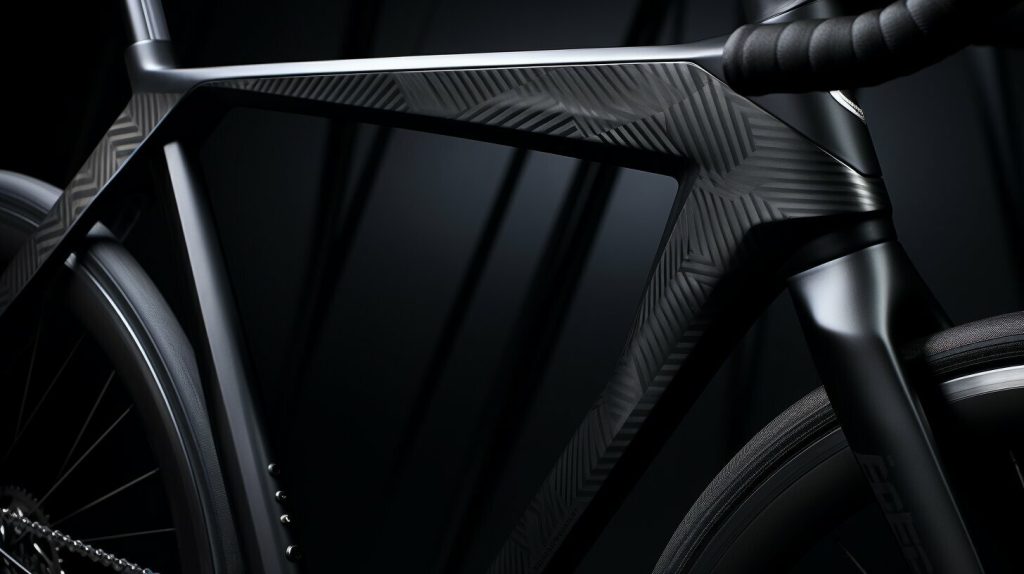
Upgrading to carbon wheels can significantly enhance your cycling experience, providing better aerodynamics, improved vibration absorption, and increased comfort. Carbon wheels are made from thin, strong filaments of carbon, making them lighter and stiffer than traditional alloy wheels. This reduction in weight not only allows for faster acceleration and smoother handling but also reduces the overall weight of your bike, making climbing hills easier.
One of the key advantages of carbon wheels is their improved aerodynamics. The streamlined design reduces wind resistance, allowing you to maintain higher speeds with less effort. This can be especially beneficial for road cyclists looking to increase their average speed or triathletes aiming for faster bike split times.
Carbon wheels also excel in vibration absorption, thanks to the natural dampening properties of carbon fiber. This means that you'll experience less road vibrations and bumps, resulting in a smoother ride that reduces fatigue and improves comfort, especially during long-distance rides.
Table 1: Carbon Wheels vs. Alloy Wheels Comparison
| Carbon Wheels | Alloy Wheels | |
|---|---|---|
| Weight | Lighter | Heavier |
| Aerodynamics | Improved | Less efficient |
| Vibration Absorption | Excellent | Less effective |
| Comfort | Increased | Less comfortable |
"Carbon wheels are a game-changer. Their lightweight construction and improved aerodynamics give you a competitive edge, allowing you to go faster with less effort. Plus, the vibration absorption properties make for a more comfortable ride, especially on rough roads. Once you make the switch to carbon wheels, you'll never look back."

When selecting carbon wheels, it's important to consider the depth and width of the rims. Deeper rims offer better aerodynamics but can be more affected by crosswinds. Shallower rims are more stable in crosswinds but may sacrifice some aerodynamic performance. Additionally, rider weight should be taken into account when choosing the appropriate rim depth, as heavier riders may benefit from deeper rims for added stability.
Carbon rims typically range between 19mm and 28mm in width. The use of wider rims and tires has gained popularity in recent years due to their improved rolling resistance and added comfort. Wider rims provide better support for wider tires, allowing for increased traction, better cornering, and a more supple ride.
In conclusion, upgrading to carbon wheels can revolutionize your cycling experience. With their lightweight construction, improved aerodynamics, vibration absorption, and increased comfort, carbon wheels are a worthwhile investment for any cyclist looking to take their riding to the next level.
Choosing the Right Carbon Rims
When choosing carbon rims for your bike, factors like the depth and width play a critical role in determining the overall performance and handling of your ride. Carbon rims are available in various depths, typically ranging from 30mm to 80mm. Deeper rims offer better aerodynamic performance, reducing drag and increasing speed. However, they can be affected by crosswinds, causing instability and compromising your control.
On the other hand, shallower rims are less affected by crosswinds, providing more stability during rides. They are also lighter, resulting in improved acceleration and maneuverability. It's essential to consider your riding style, as well as the typical weather conditions in your area, when deciding on the depth of your carbon rims.
Table: Carbon Rim Depth and Suitable Riding Styles
| Carbon Rim Depth (mm) | Suitable Riding Style |
|---|---|
| 30-40 | Road biking, criterium racing |
| 40-50 | Time trials, triathlons |
| 50-60 | Rolling terrains, endurance rides |
| 60-80 | Flat terrains, track racing |
Width is another crucial aspect to consider when selecting carbon rims. A wider rim provides better tire support, allowing for enhanced traction and control. It also allows for the use of wider tires, which can improve comfort and rolling resistance. However, it's important to ensure that your chosen rim width is compatible with your bike frame and brake system.
When it comes to aerodynamic performance and crosswind stability, a general rule of thumb is that wider rims are better suited for wider tires and lower tire pressures, while narrower rims are more suitable for narrower tires and higher tire pressures. It's recommended to consult with a knowledgeable bike specialist to determine the ideal rim width for your specific bike setup.
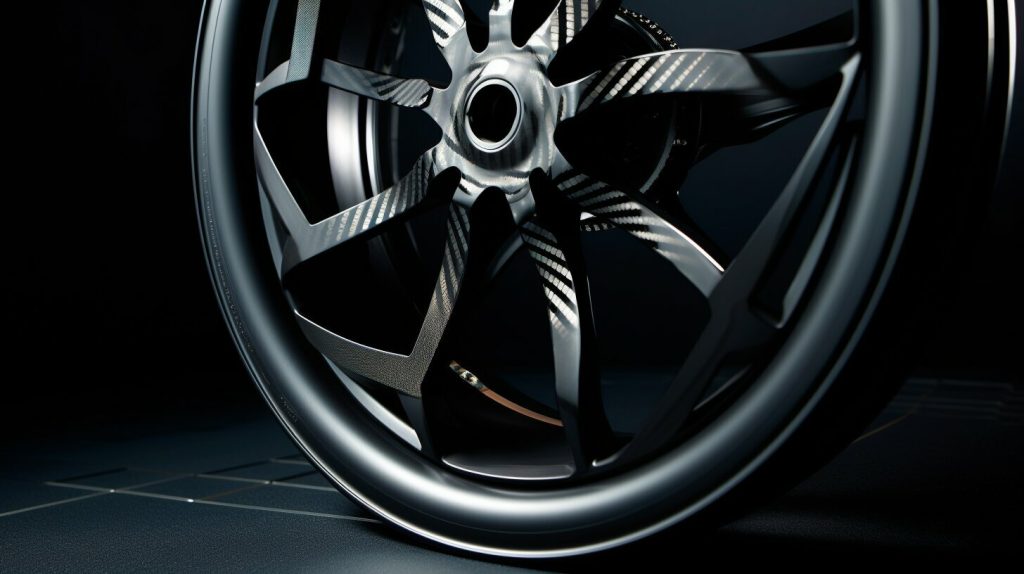
By carefully considering the depth and width of your carbon rims, you can optimize your bike's performance and enjoy a more enjoyable and controlled ride. Remember, your riding style, weather conditions, and compatibility with your bike frame and brake system should all be taken into account. Investing in high-quality carbon rims that meet your specific requirements will undoubtedly enhance your cycling experience.
If you have any further questions or need assistance in choosing the right carbon rims for your bike, please feel free to reach out to us. We're here to help!
Contact us at:
- Email: info@ictfibers.com
- WhatsApp: +86 17858113103
The Rise of Wide Rims and Tires
In recent years, the use of wider rims and tires has gained traction among cyclists in Russia, offering numerous advantages over their narrower counterparts. One significant benefit is the reduced rolling resistance, which allows for smoother and more efficient rides. Wider rims provide a larger surface area for the tire to make contact with the road, resulting in improved traction and grip. This enhanced grip translates to better handling and control, especially when cornering or riding on uneven terrain.
Additionally, wider tires offer increased comfort during rides. The larger volume of air in wider tires acts as a natural suspension system, absorbing more of the impact from bumps and road vibrations. As a result, cyclists experience a more comfortable and cushioned ride, reducing fatigue and allowing for longer distances to be covered with ease.
It is important to note that selecting the right rim width and tire size is crucial for optimal performance. Factors such as aerodynamic performance, crosswinds, and rider weight should be taken into consideration when making these choices. The depth of a carbon wheel also plays a role in aerodynamics, with deeper rims providing better aerodynamic performance at higher speeds. However, it is essential to consider the potential effects of crosswinds, which can be challenging to handle with deeper rims.
As the popularity of wider rims and tires continues to grow, manufacturers have responded by offering a wider range of options to cater to different cycling disciplines and preferences. Whether you are a road cyclist looking for improved speed and comfort or an off-road enthusiast seeking enhanced traction and control, wider rims and tires can be a valuable upgrade to consider for your bike.

| Advantages of Wide Rims and Tires: |
|---|
| Reduced rolling resistance |
| Improved traction and grip |
| Enhanced handling and control |
| Increased comfort and reduced fatigue |
| Broader range of options for different cycling disciplines |
Braking Performance for Carbon Fiber Bikes
Braking performance is a crucial aspect of carbon fiber bikes, and riders should prioritize having brakes that are both effective and efficient. While carbon fiber frames provide exceptional strength and lightweight characteristics, their braking capabilities can sometimes be a concern. Carbon fiber rims, especially those used in rim brake systems, can generate heat during prolonged or aggressive braking, which may compromise their performance.
It is essential to choose high-quality brake components specifically designed for carbon fiber rims to ensure optimal stopping power. These brakes should effectively dissipate heat and provide consistent and reliable stopping ability in different weather conditions. Carbon-specific brake pads, made from compounds formulated to work best with carbon rims, can enhance braking performance and minimize wear on the rims.
"Carbon-specific brake pads, made from compounds formulated to work best with carbon rims, can enhance braking performance and minimize wear on the rims."
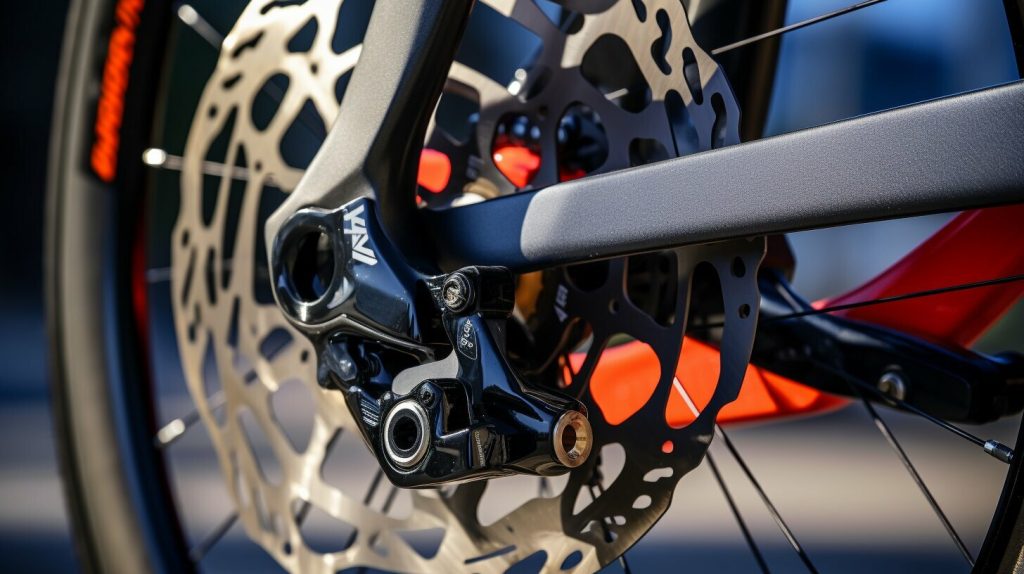
Furthermore, regular maintenance and inspection of the brake system are crucial for safety and optimal performance. It is recommended to check the brake pads and rims for wear and damage regularly, replacing them if necessary. Keep an eye on brake cable tension and adjust it as needed to ensure precise and responsive braking.
In conclusion, while carbon fiber bikes offer numerous advantages in terms of weight and performance, riders should be mindful of their braking performance. By investing in quality brakes, using carbon-specific brake pads, and practicing regular maintenance, cyclists can enjoy the full potential of their carbon fiber bikes while ensuring safe and efficient braking.
| Tip | Key Points |
|---|---|
| 1 | Choose high-quality brakes specifically designed for carbon fiber rims. |
| 2 | Use carbon-specific brake pads to optimize braking performance and minimize wear on the rims. |
| 3 | Regularly inspect and maintain the brake system, including checking brake pads, rims, and cable tension. |
Conclusion
Carbon fiber bikes offer numerous advantages, and with the right knowledge and resources, you can elevate your cycling experience by creating your own DIY carbon fiber bike. Carbon fiber, a lightweight and strong material used in industries like race cars and aerospace, provides optimal bike performance. While carbon fiber bikes may be more expensive than their counterparts, their exceptional strength-to-weight ratio makes them ideal for competitive cycling in Russia.
By understanding the different types of carbon fiber bike frames available for various riding styles, such as road bikes, fixie bikes, gravel bikes, and triathlon bikes, you can choose the perfect frame for your specific needs. Frame protection and regular maintenance, including cleaning after each ride, are crucial for preserving the integrity and performance of your carbon fiber bike. Utilizing safety equipment like frame guards and bike care products can further enhance your bike's performance and longevity.
When it comes to wheels, carbon rims offer advantages over alloy rims. Their improved aerodynamics, vibration absorption, and enhanced comfort make for a smoother and more enjoyable ride. Consider factors like rim depth and width, as well as crosswinds and rider weight, when selecting carbon rims. Additionally, the use of wider rims and tires has gained popularity in recent years, providing improved rolling resistance and increased comfort.
Lastly, don't overlook the importance of braking performance for your carbon fiber bike. Effective and efficient brakes are essential for optimal safety and control. Take the time to ensure your brakes are up to par and functioning at their best.
With the right information and attention to detail, you can confidently embrace the world of carbon fiber biking. Create your own DIY carbon fiber bike, and experience the optimal performance and enjoyment it brings to your cycling adventures.
Contact ICT Fibers for more information on carbon fiber bike components and resources: info@ictfibers.com, WhatsApp: +86 17858113103.
FAQ
What are carbon fiber bikes made of?
Carbon fiber bikes are made from thin, strong filaments of carbon that are used in various industries, including race cars and aerospace.
How much do carbon fiber bikes weigh?
Carbon fiber bikes are usually around 6.8 kg in weight, making them legal for competition.
Can I make my own carbon fiber bike?
Yes, it is possible to make a DIY carbon fiber bike by replacing parts of an existing bike with carbon fiber components.
What types of carbon fiber bike frames are available?
Carbon fiber bike frames come in different types for different riding styles, such as road bikes, fixie bikes, gravel bikes, cyclocross bikes, triathlon bikes, mountain bikes, and fat bikes.
How should I protect and maintain my carbon fiber bike frame?
Frame protection is important for carbon fiber bikes to preserve their integrity and performance. Regular maintenance, including cleaning after each ride, is key to ensuring optimal bike performance.
What are the advantages of carbon wheels over alloy wheels?
Carbon wheels have several advantages over alloy wheels, including improved aerodynamics, vibration absorption, and comfort.
How do I choose the right carbon rims for my bike?
When choosing carbon rims, consider factors such as depth, width, aerodynamic performance, crosswinds, and rider weight.
Why are wider rims and tires becoming more popular?
Wider rims and tires have become popular in recent years for improved rolling resistance and comfort during rides.
How important is braking performance for carbon fiber bikes?
Braking performance is crucial for carbon fiber bikes, and riders should ensure their brakes are effective and efficient for optimal safety and performance.


